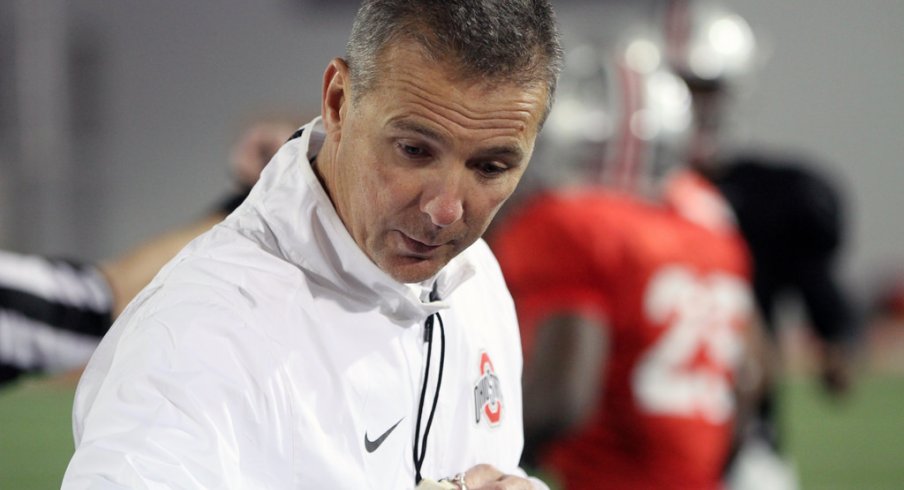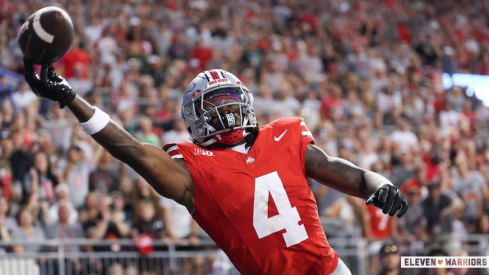If a player is not performing up to expectations, Ohio State coach Urban Meyer says it is for one of three reasons.
“No. 1, you’re a really poor player,” Meyer said Tuesday after the Buckeyes’ ninth practice of the spring. “You’re a really, really bad football player, and that’s usually an excuse because if you’ve made it to this level you’ve done something right.”
That’s not very common at Ohio State and some of the other top-tier programs around the country that recruit at such a high level year after year. There aren’t very many “really, really bad football players” playing for Meyer and the Buckeyes or Nick Saban and Alabama. They don't recruit bad players.
“No. 2 would be you’re poorly coached, and I try to watch that closely,” Meyer said. “Once again, [if you're a bad coach] to get to this level as a coach you’ve either been a complete phony or somehow you got away with it and I don’t see that.”
Meyer monitors everything in his program. If he’s not pleased with a member of the coaching staff, he changes things. It’s that simple.
What’s not as easy, though, is Meyer’s third reason why players underperform in college football. It’s the most difficult, Meyer says, and it’s what makes the coaching staff work hardest.
“The third one is there’s something wrong,” Meyer said. “The chemistry in the unit room, there’s something wrong with maybe their lifestyle. Maybe you’re not getting your rest, maybe you’re not putting the right things in your body.
“Maybe you shut off being an Ohio State football player. When you walk out the doors, you quit thinking football.”
Coaching 18-to-22-year olds is not easy; any coach would admit as much. Disconnects happen with college football players. The transition from high school to major college football is difficult for most.
The ability to reach those players, though, is what separates the good coaches from the great ones. Players can go from good to great, too, when they finally figure things out and meet the coaches halfway.
“That’s our job to address it,” Meyer said. “It’s only one of those three things and 90 percent of it is the last one.
“Why did Curtis Grant, Stevie Miller, all these kids become so great at the end of [2014]? Because they fixed that No. 3.”
Ohio State has plenty of young players for the upcoming 2016 season, many of which have little-to-no game experience. It’s not that they haven’t lived up to expectations yet, it has more to do with the fact they haven’t had the opportunity to meet them. There's a lot of pressure on this young group. Expectations are never going to change at a place like Ohio State.
But spring practice is all about just that: opportunity. Meyer and Co. are using this time to do the best they can to groom a young group so that when fall rolls around they are prepared and that there are no excuses. Meyer says a team’s youth is “a great excuse.”
If Ohio State, this season, isn’t quite at the same level as it has been the last few years it will be for any number of reasons; Meyer won't let youth be one of those. But if the Buckeyes do contend for the Big Ten title and a College Football Playoff berth, it will be because Meyer and his staff had a breakthrough and struck something with the players.
It will be because they fixed that No. 3.
“We have to find out that reason,” Meyer said. “Maybe you find out socially they’re not doing what they’re supposed to do, maybe they’re doing something that young male people do that’s not conducive to being a major college football player.
“That’s our job to find out. It’s too easy to just say you’re not good enough.”


